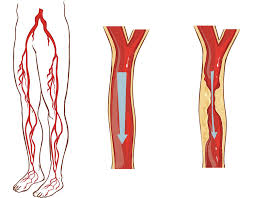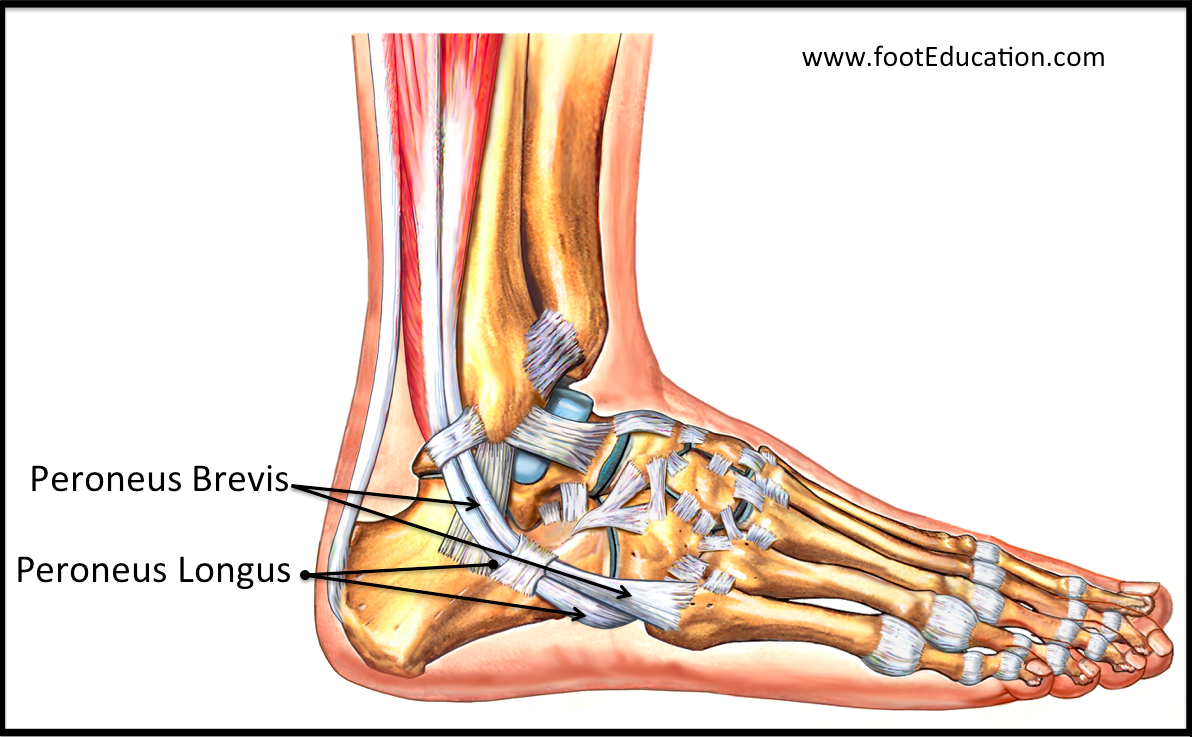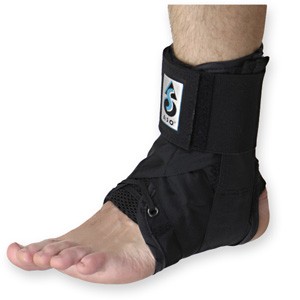Plantar Fasciitis – Foot Pain
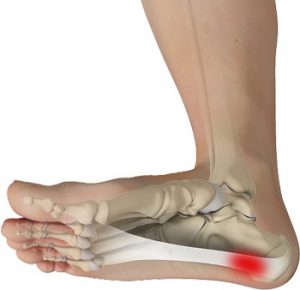 Plantar fasciitis is a painful inflammatory condition of the connective tissue on the sole of the foot(the plantar fascia). It is often caused by overuse of the plantar fascia, the tendons that help form the arch of the foot , running from the heel along the sole of the foot towards the toes. The plantar fascia basically acts as shock absorber for the foot during movement while helping maintain the arch of the foot during standing. Plantar fasciitis is easiest treated when caught early. Longstanding cases often demonstrate more degenerative changes in the tissue than just inflammatory changes. This condition is called termedplantar fasciosis and can be much more difficult to treat.
Plantar fasciitis is a painful inflammatory condition of the connective tissue on the sole of the foot(the plantar fascia). It is often caused by overuse of the plantar fascia, the tendons that help form the arch of the foot , running from the heel along the sole of the foot towards the toes. The plantar fascia basically acts as shock absorber for the foot during movement while helping maintain the arch of the foot during standing. Plantar fasciitis is easiest treated when caught early. Longstanding cases often demonstrate more degenerative changes in the tissue than just inflammatory changes. This condition is called termedplantar fasciosis and can be much more difficult to treat.
While plantar fasciitis is often attributed to overuse in athletes, among non-athletic populations it is associated with a high body mass index in combination with long periods of weight bearing( Mc Poil et al. 2008). Also people with flat feet or high arches tend to be more at risk. A Flat foot tends to put increased strain on the origin of the plantar fascia at the heel (calcaneus) as the plantar fascia attempts to maintain a stable arch during the propulsive stage of the gait(walking, running etc.). Excessive movement of the forefoot in relation to the heel during movement can also predispose to plantar fasciitis. In people with high arches there may be excessive strain on the heel due to the foots limited range of movement and thus a decreased ability to adapt to the ground during movement.
Plantar fasciitis is commonly also associated with tightness in the calves, hamstrings and gluteal regions. Muscles in these areas have a significant effect on gait and thus foot biomechanics . Biomechanics is basically the science of movement, so when you here the phrase ”poor biomechanics” used it is basically referring to inefficiency during movement.
With the condition the pain is usually gradual in onset and felt on the medial aspect of the heel. Initially it is worse in the morning and decreases with activity, often aching afterwards. Periods of inactivity during the day are generally followed by an increase in pain as activity is recommenced. As the condition becomes more severe, the pain may be present when weight-bearing and worsen with activity.
Treatment
Effective treatment uses a multifaceted approach which may involve some or all of the following ; the use of nonsteroidal anti-inflammatory drugs (NSAIDs), deep tissue massage of the plantar fascia and along with deep tissue work to loosen out the calves, hamstrings and gluteal regions where necessary, stretching exercises for the plantar fascia(DiGiovanni et al. 2003) and calf muscles, avoidance of aggravating activity, biomechanical correction with orthotics, electro-acupuncture and cold compression of the heel bursitis, strengthening exercises for the intrinsic muscles of the feet(Dyck and O’Neill ,2004), taping the heel into inversion (short term solution)( Radford et al. 2006), changing to proper supportive footwear containing well supported arches and midsoles (Yamashita, M.H. 2005). In extreme cases when all else has failed corticosteroid injections may be considered if there is a bursitis in the heel (Crawford et al. 1999) with surgery used as a last resort. This condition is usually resolved swiftly by an experienced practitioner without the need for surgery or corticosteroid injections.
Physiotherapist based in Tralee , Co. Kerry and open 7am to 11 pm weekdays, 7am to 2pm Saturdays.Please ring 086-7700191 anytime to make an appointment. We also specialize in proper deep tissue massage.
References
Crawford, E., Atkins, D., Young, P. et al. Steroid injection for heel pain: evidence of short term effectiveness: a randomized controlled trial. Rheumatology 1999;38(10):974-7.
DiGiovanni, B.F., Nawoczenski, D.A., Lintal, M.E. et al. Tissue-specific plantar fascia-stretching exercise enhances outcomes in patients with chronic heel pain. A prospective randomized study. J. Bone Joint Surg. Am. 2003;85-A(7):1270-7.
Dyck, D.D., Boyajian-O’Neill, L.A. Plantar fasciitis. Clin. Journal Sport Med. 2004;14:305-9.
McPoil, T.G., Martin, R.R.L., Cornwall, M.W. et al. Heel pain – plantar fasciitis: clinical practice guidelines linked to the international classification of functioning, disability, and health from the orthopedic section of the American Physical Therapy Association. J. Orthop. Sports Phys. Ther. 2008;38(4): A1-18.
Radford, J.A., Landorf, K.B., Buchbinder R. et al. Effectiveness of low-dye taping foe the short-term treatment of plantar heel: a randomised trial. B.M.C.
Yamashita, M.H. Evaluation and selection of shoe wear and orthoses for the runner. Phys. Med. Rehabil. Clin. N. Am. 2005;16:801-29.
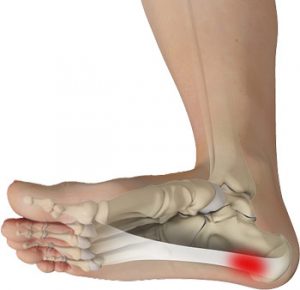
 Plantar fasciitis is a painful inflammatory condition of the connective tissue on the sole of the foot(the plantar fascia). It is often caused by overuse of the plantar fascia, the tendons that help form the arch of the foot , running from the heel along the sole of the foot towards the toes. The plantar fascia
Plantar fasciitis is a painful inflammatory condition of the connective tissue on the sole of the foot(the plantar fascia). It is often caused by overuse of the plantar fascia, the tendons that help form the arch of the foot , running from the heel along the sole of the foot towards the toes. The plantar fascia